Key takeaways:
- The breakdancing community is diverse and emphasizes art, expression, respect, and growth among dancers.
- After-battle feedback fosters improvement and strengthens bonds, creating a culture of trust and accountability.
- Constructive criticism is vital for personal growth, enhancing resilience and nurturing a supportive environment.
- Effective feedback should be specific, empathetic, and collaborative to maximize its impact on dancers’ development.
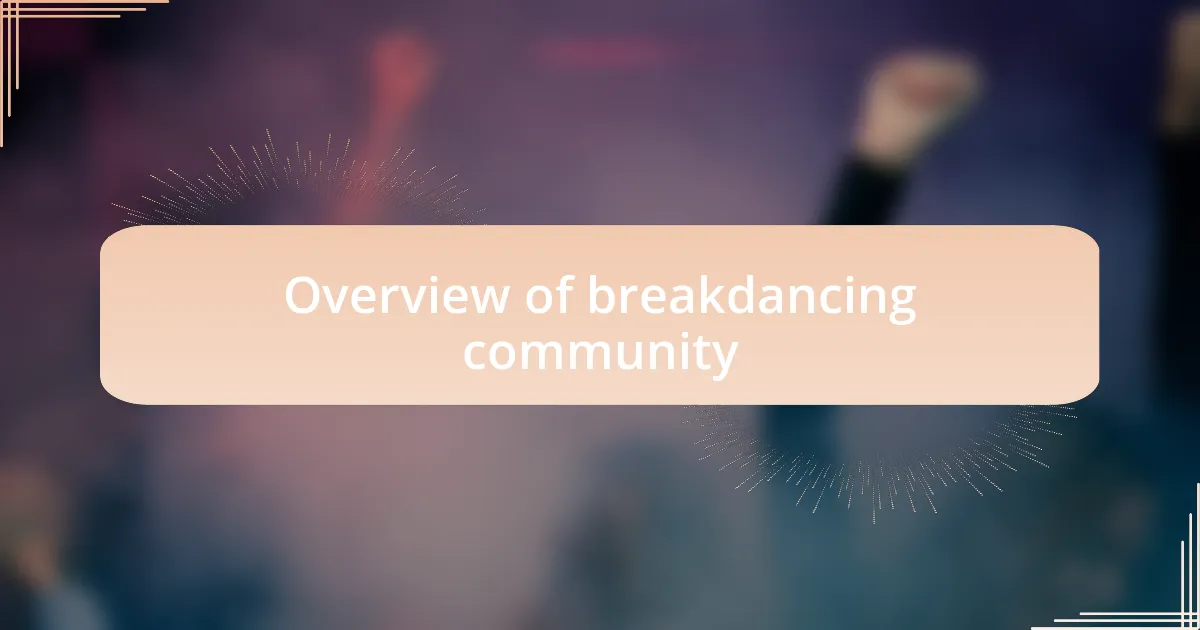
Overview of breakdancing community
The breakdancing community is truly diverse, uniting individuals from various backgrounds, cultures, and experiences. I remember attending my first local battle and feeling the electric atmosphere — every dancer was there to express themselves, showcasing their skills and stories through movement. Isn’t it fascinating how something as dynamic as breakdancing can bridge gaps and bring together people who might have never crossed paths otherwise?
In the heart of this community lies a genuine passion for art and expression. Each time I experience a cypher, I’m reminded of how collective energy can inspire even the most hesitant dancers to step forward and share their flow. Have you ever felt that rush of excitement when the beat drops and everyone around you is in sync, celebrating creativity and individuality?
Moreover, the camaraderie I’ve observed is remarkable. It’s not just about competition; it’s about respect and growth. I recall a fellow dancer sharing how feedback from peers transformed their style, allowing them to push boundaries and explore new moves. Doesn’t that highlight the power of community in shaping artists and enhancing the culture we all cherish?
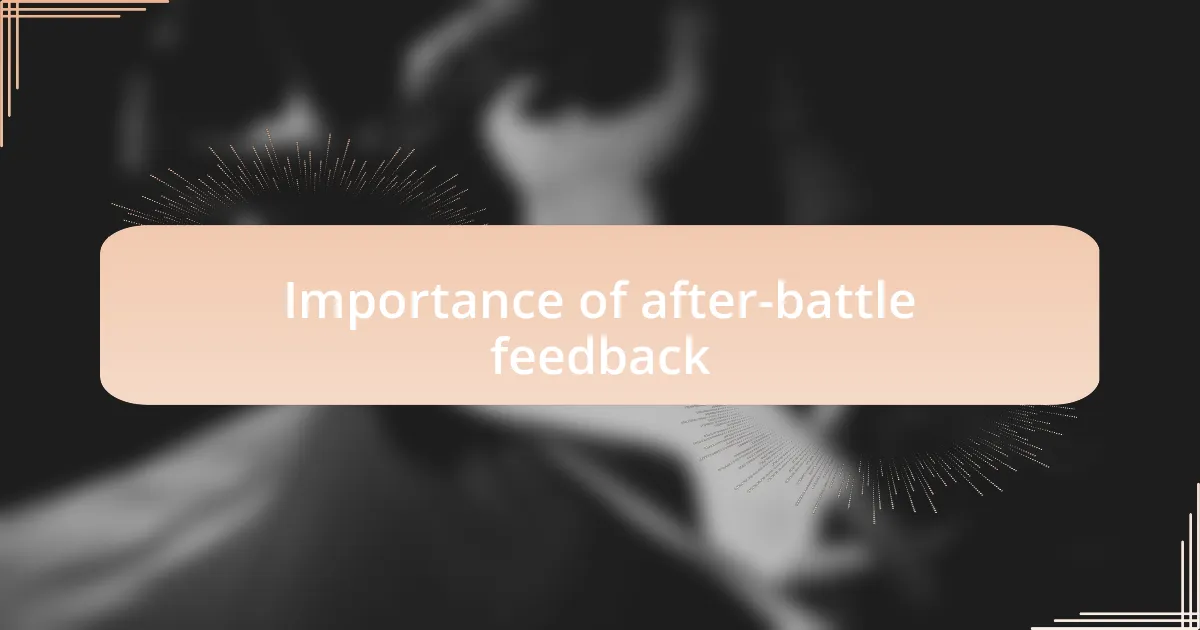
Importance of after-battle feedback
The importance of after-battle feedback lies in its ability to foster growth and improvement among dancers. I vividly remember a moment after a battle where I sat down with a seasoned breaker who critiqued my performance. Their insights not only opened my eyes to details I had overlooked but also inspired me to refine my craft and explore new techniques. Have you ever received that kind of valuable input that shifted your perspective entirely?
Moreover, feedback creates a supportive environment that encourages openness and experimentation. It reminds us that even the most skilled dancers are constantly evolving. I’ve seen newcomers take constructive criticism to heart and return to the dance floor even more motivated. Isn’t it powerful to realize that every bit of feedback can lead to a breakthrough moment in one’s journey?
Additionally, the exchange of feedback reinforces the bonds between dancers. When I share my thoughts with others, I often feel a deep sense of connection that extends beyond just the dance itself. It’s like building a network of trust and accountability. Don’t you think that this shared growth enhances both individual and community progression, making our breakdancing culture even richer?
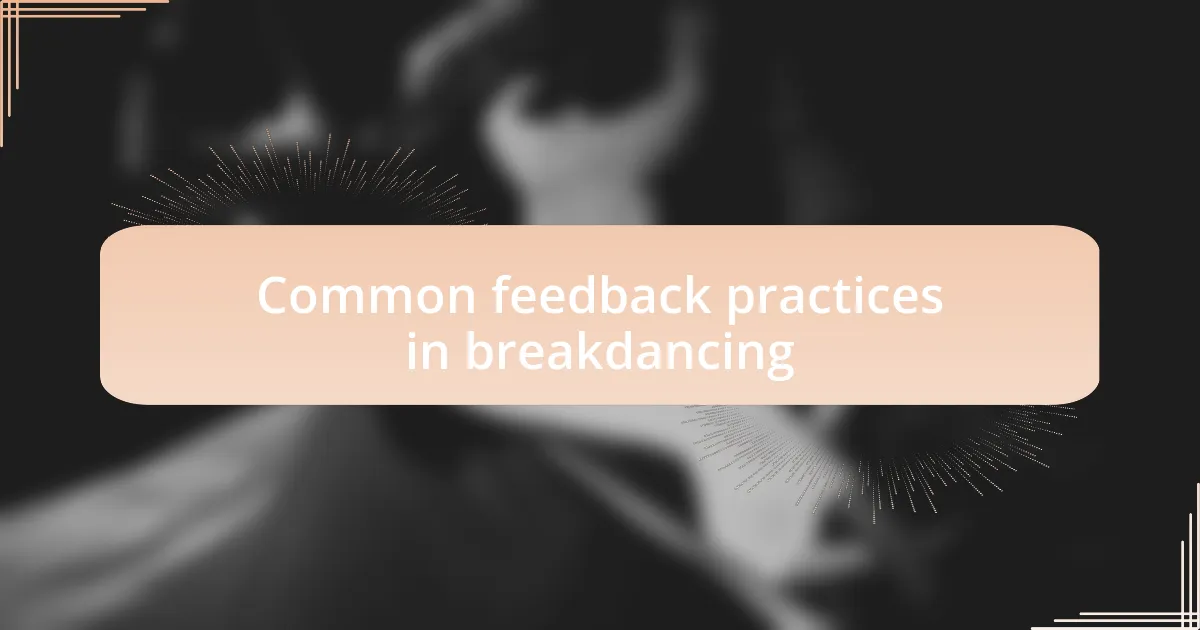
Common feedback practices in breakdancing
One common feedback practice in breakdancing involves post-battle circles where dancers gather to share their thoughts. I remember feeling nervous at first when I joined such a circle, but the vulnerability in discussing our performances truly deepened our connections. Isn’t it incredible how a simple discussion can transform a competitive atmosphere into one of camaraderie and shared learning?
Another significant approach is the use of video reviews. Watching a recording of my battles often revealed subtle flaws and areas for improvement that I couldn’t see in the moment. Have you ever been surprised by something you thought looked great until you saw it on screen? This practice not only boosts self-awareness but also encourages more precise feedback from peers, creating a more refined skill set over time.
Lastly, one powerful feedback method is the mentorship dynamic, where experienced dancers take newcomers under their wing. I’ve watched many beginners flourish as they receive tailored advice and support. What’s really remarkable is how this one-on-one interaction can lead to breakthroughs—like learning that one tricky move in a way that feels personal and relatable. Doesn’t it feel rewarding to share knowledge and witness someone grow from it?
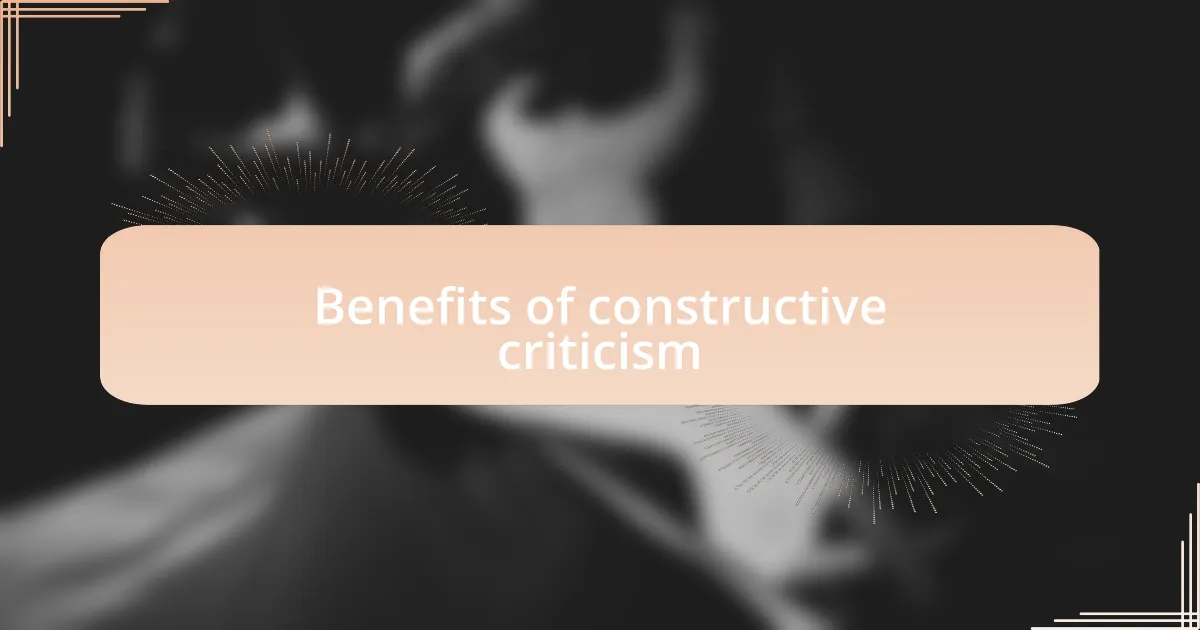
Benefits of constructive criticism
Constructive criticism plays a pivotal role in personal growth within the breakdancing community. I vividly recall receiving feedback from my peers after a particularly challenging battle. Their suggestions were more than just pointers; they highlighted my strengths while gently addressing areas for improvement. Does it feel liberating to know that their intentions were rooted in support rather than judgment? It sure did for me.
Another benefit of constructive criticism is that it fosters resilience. Early in my dancing journey, I struggled to take feedback positively. But gradually, I learned that each critique was an opportunity to push my boundaries further. Have you ever felt discouraged after a tough comment? I’ve been there too, yet transforming that initial sting into motivation was a game-changer for my growth.
Additionally, embracing constructive criticism cultivates a culture of trust and openness. In my experience, when we openly share our vulnerabilities and ask for feedback, it encourages others to do the same. I’ve watched friendships deepen in the process, with dancers supporting each other through honest exchanges. Isn’t it powerful to think that a simple conversation can create a nurturing environment where everyone feels valued and motivated to improve?
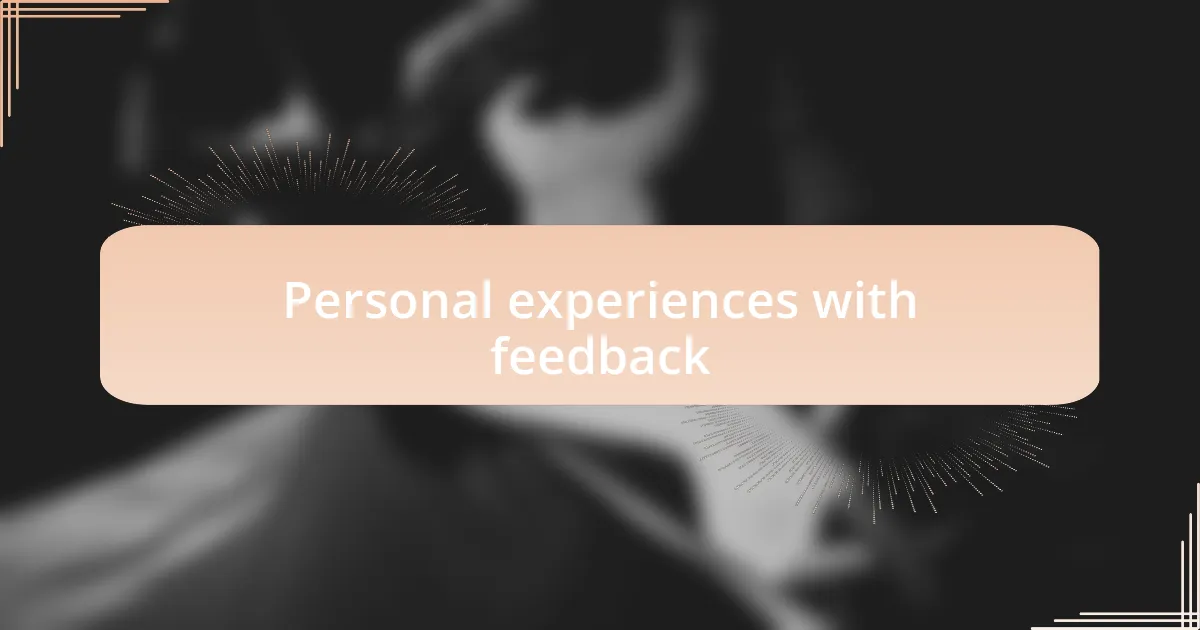
Personal experiences with feedback
Reflecting on my personal experiences with feedback brings up vivid memories from battles. I remember one evening when a fellow b-boy pointed out my footwork wasn’t as sharp as it could be. Initially, I felt a hint of embarrassment, but as I worked on those moves, I found a newfound precision and flair in my dancing. Isn’t it amazing how one piece of advice can lead to such profound change?
There was a moment in my journey when I received feedback that stung but ultimately shaped my style. After a particularly intense battle, someone told me my transitions lacked fluidity. At first, I was defensive and thought, “How could they not see the effort I put in?” However, diving into practice with that critique in mind unlocked a whole new layer to my performance. Have you ever had a moment where feedback led you to a breakthrough you didn’t see coming?
Over time, I’ve come to realize that feedback is a conversation, not a lecture. One time, I asked for input after my performance in a local cypher. The candor and honesty of my peers opened my eyes to aspects of my dancing I had never considered. That safe space fostered not just critiques but a shared experience, where we all grew together. Isn’t it enriching to think that feedback strengthens our ties within the community?

Tips for giving effective feedback
When it comes to giving effective feedback, I’ve learned that specificity is key. I remember once telling a younger dancer that they had great energy, but they were unsure about their freezes. Instead of leaving them with vague praise, I suggested focusing on one particular freeze that could elevate their presence. It not only gave them a clear direction but showed I was genuinely invested in their improvement. Isn’t it more encouraging when feedback comes with actionable steps?
Emotional delivery can also transform feedback from merely constructive to deeply impactful. I recall a time when I was nervous to share my thoughts after a performance, but then I saw how hard the dancer worked. I approached them with empathy, saying, “I see how much you put into this—your hard work deserves to shine even brighter!” That shift in tone altered the whole conversation. Have you ever felt that an empathetic approach made someone more receptive to your suggestions?
Lastly, I firmly believe in making feedback a two-way street. After a workshop, I asked participants what they thought about my technique demonstration. Their insights sparked a lively discussion, leading to improved methods for everyone involved. It became clear that not only do we learn individually, but we can collectively enhance our skills. How often do you think about the power of collaboration in giving and receiving feedback?

Encouraging a supportive environment
Creating a supportive environment in the breakdancing community is essential for growth. I remember the first time I participated in a cypher, feeling intimidated by the talent around me. Instead of criticism, the dancers gave encouraging nods and cheers. It was their supportive vibe that allowed me to take risks and express myself freely. Isn’t it amazing how encouragement can make all the difference in someone’s confidence?
I’ve also seen how sharing personal struggles can foster camaraderie. During a circle session, I opened up about my own challenges with a particular move. Instead of feeling isolated, I found others who shared similar feelings. This exchange created a bond among us, solidifying a sense of safety where everyone felt they could be vulnerable. Have you ever noticed how shared experiences can turn strangers into allies?
Finally, celebrating small victories is another way to nurture support. I once witnessed a fellow dancer attempting a new freeze for the first time. The excitement from everyone in the space was palpable, and we all cheered them on, regardless of the outcome. That collective celebration reinforced the idea that every step, big or small, mattered in our journey. How often do we take a moment to acknowledge progress, no matter how minor?